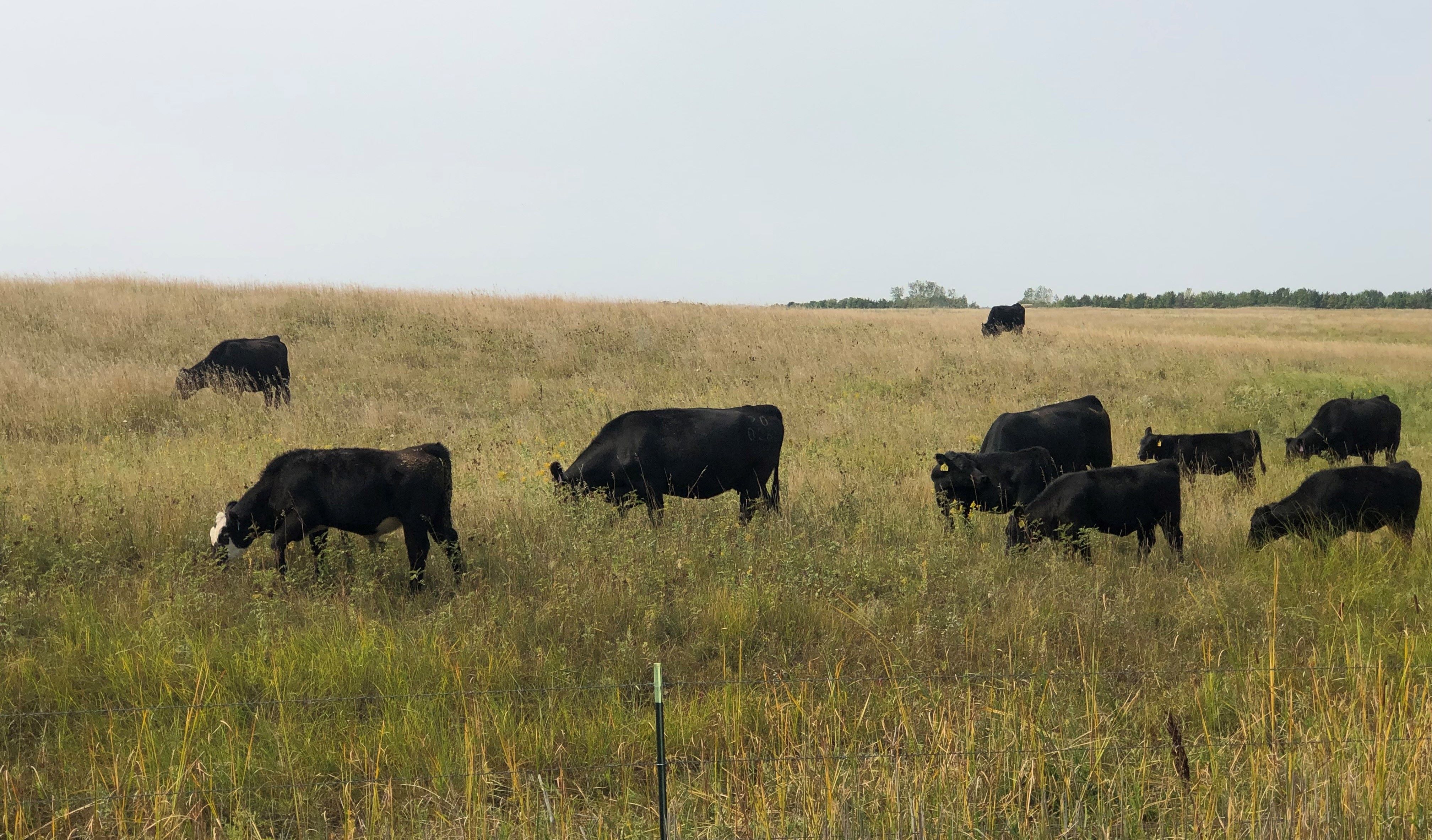Analysis was completed for growth and production at the end of the monitoring period for each year. Growth of key species and production is depicted using box plots to display median values and variability in the data.
The growth of key grass species was influenced by degree of use in both years. Growth of both smooth brome grass and western wheatgrass was highest at locations with slight to moderate use and lowest at locations with severe use. Kentucky bluegrass was strongly influenced by degree of use in 2022; however, this trend was not as strong in 2023. Due to the shallow rooting depth, Kentucky bluegrass growth and production is significantly impacted by drought (Toledo et al. 2023). We believe that the impacts of plant growth in 2022 were more influenced by drought conditions and for 2021 more impacted by management. The reduced growth of these cool-season grasses is likely caused by tiller mortality or a loss of plant vigor in the fall from a combination of drought stress and high grazing use that either removed the growing points or reduced plant vigor of the evaluated cool-season grasses. Plants that experience tiller mortality need to use carbohydrates that are stored in the roots to grow a new tiller in the spring, which results in delayed spring growth and the subsequent growth and production potential.
The height of smooth brome was highest for slight to moderate use pastures with a median height of 8.25 inches in 2022. However, full use pastures had greater growth with a median height of 11 compared to 10.75 inches for the slight-moderate use in 2023. Severe use pastures had the lowest median height at 5.25 and 7.3 inches in 2022 and 2023, respectively. The height of Kentucky bluegrass was the highest for slight to moderate use pastures and lowest in the severe use pastures in 2022 with median heights of 9 and 2.5, respectively. Whereas, in 2023 the full use pastures had the greatest growth at 6.5 inches and the close use pastures had the lowest growth at 3.5 inches. The height of western wheatgrass was the highest for slight to moderate use pastures across both years with a median height of 6.5 inches in 2022 and 6.25 inches in 2023. The full and close use pastures fell in the middle with median heights ranging between 3.5 and 6 inches. The severe use pastures had the lowest median height at 3 inches in 2023. Western wheatgrass was not found or documented in the severe use locations in 2023.
Forage production was impacted by grazing use in both 2022 and 2023. The slight to moderate use sites had the greatest production with a median of 2,548 pounds per acre in 2022. However, the full use sites reported the highest production in 2023 with a median value of 2,925 pounds per acre. In 2022, the full and close use sites were similar with medians of 1,275.8 and 1,250 pounds per acre, respectively. This similarity is likely due to an outlier location with close use that reported much higher production than the other sites at 5,175 pounds per acre. Across both years the severe use sites had the lowest production, reporting median values of 1,091 and 1,335 pounds per acre in 2022 and 2023, respectively. When compared to the highest producing grazing uses the severe use locations had 57% (2022) and 54% (2023) reduction in forage production.
Grazing management decisions can have long-term impacts on forage growth and production. Severe use of grasslands, especially in the fall, can result in tiller mortality by either removal of the growing point or physiological stress to cool-season grasses. Tiller mortality can delay growth of cool-season grasses the following growing season, as well as reduce growth and overall forage production. These impacts are magnified following a drought as a result of increased tiller mortality caused by drought stress and the higher probability of pastures receiving heavier grazing use. The results of this program demonstrate the importance of having a grazing management plan and monitoring grazing use to reduce long-term impacts to grazing resources. Good grazing management paired with monitoring of pastures enhances the health and resilience of grazing systems. If you are interested in developing a grazing plan or learning more about tools to monitor grazing use, contact your local NDSU Extension agent.
